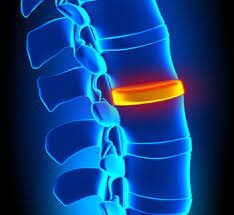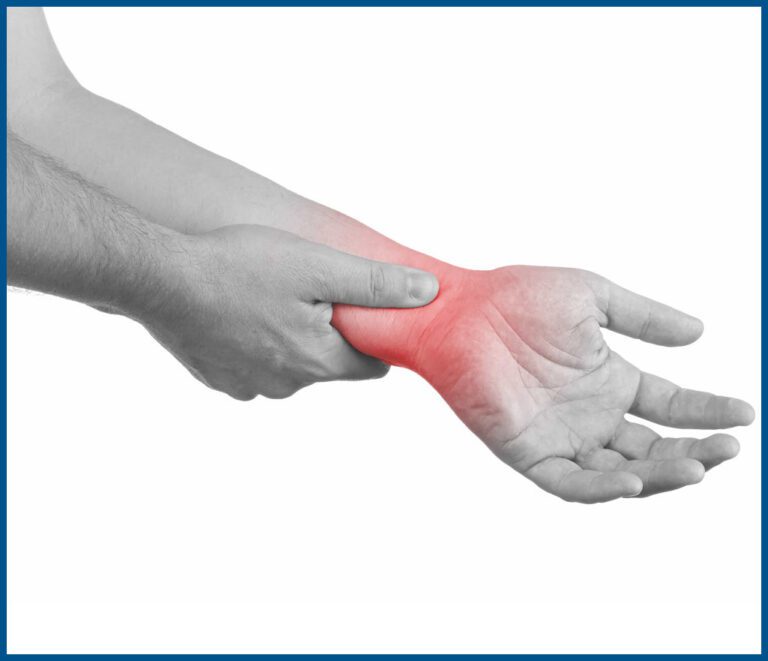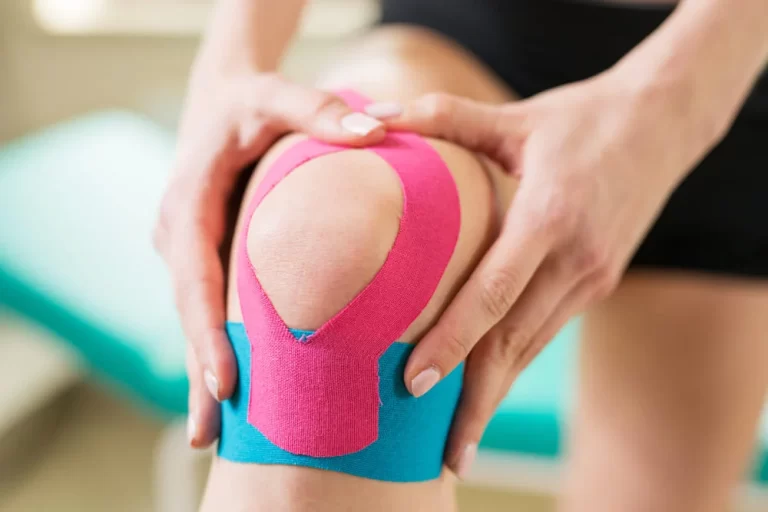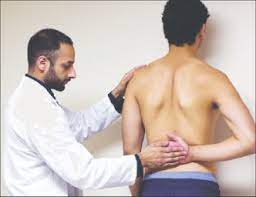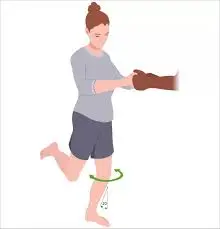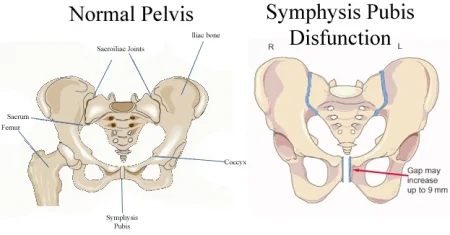Discitis
Table of Contents
What is discitis?
Discitis is a serious but unusual medical condition in which the infection of the intervertebral disc occurs which is located between two vertebrae. The role of the intervertebral discs is to discrete and cushion the spinal segments from each other.
An infection, and thus inflammation of these discs may cause much pain and discomfort. What makes the things unusual is also what makes it difficult to treat: the relatively scarce blood supply to these segments. This activity illustrates when this condition should be considered in a differential diagnosis, articulates how to properly diagnose this condition, and highlights the role of the interprofessional team in caring for patients with this condition.
What are the symptoms of discitis?
If a person has discitis, the person will likely have significant pain in part of the spine. The lower and upper back can be affected. Other symptoms may involve:
- Changes in the posture
- Stiffness in the back
- Difficulty performing daily mobility tasks
- Abdominal pain or discomfort
- Fever
What causes discitis?
- Viral or bacterial infections may cause discitis.
- An autoimmune disorder may also cause it.
- The infection or autoimmune response leads to swelling and inflammation, which outcome in pain and other symptoms.
Who is at risk of developing discitis?
Individuals are more likely to develop discitis if:
- A person has an autoimmune disorder
- A person has a weakened immune system
- A person uses intravenous drugs
- A person is recovering from surgery
- Children under the age of ten are also more common to develop this condition.
How is discitis diagnosed?
The doctor can use a number of various tests and tools to diagnose discitis, involving:
- Blood tests
- Bone scans
- X-rays
- MRIs
- Tissue analysis
Blood tests
- A doctor can suggest blood tests to help evaluation of discitis.
- They will collect a sample of the blood to send to a laboratory for analysis.
- Lab technicians may use different tests to check for signs of infection.
- For example, a complete blood count is a very usual blood test.
- Lab technicians may use it to count the number of red and white blood cells in the blood.
- That may help them recognize signs of infection, incorporating elevated levels of white blood cells.
- They may also use an erythrocyte sedimentation rate method to look for signs of infection.
Bone scans
- The doctor can use a bone scan to examine the vertebrae and the spaces around them.
- It may help them assess the vitality of the bone and learn if people have a bone infection.
- A nurse or technician will inject radioactive material into one of the veins to conduct the scan.
- It will go through the blood and collect in the bones, specifically in areas where the bone is growing or breaking down.
- They will ask a person to lie down on a special table where a scanning machine and camera will move over the body.
- The camera will track the radioactive material as it works its way through the body and bones.
Imaging tests
- The doctor can also suggest radiological imagining tests, like an X-ray or MRI.
- These tests may create pictures of the spine and nearby tissues.
- Infection and inflammation may potentially move from one area to another.
Tissue analysis
- In some cases, the doctor can order a biopsy of the spinal tissue to collect a sample for analysis.
- This may help them develop their diagnosis.
Risk Factors
- Discitis takes place in the young and then again in the elderly.
- The older one is, the higher the chance to have this rare (1 out of 100,000 people) disorder.
- Diabetes, any immune deficiency, and vascular disease predispose individuals to this problem.
- Drug abuse, specifically intravenous drug use, and alcoholism are also risk factors.
Those who are at risk for developing discitis generally are in the following situations:
- Have a weakened immune system
- A user of intravenous drugs
- Recovering from surgery
- Have an autoimmune disorder
- A child under the age of 10
How is discitis treated?
- If people are diagnosed with discitis, the doctor will likely prescribe medications to treat it.
- For example, they can prescribe antibiotics to treat a bacterial infection or anti-inflammatory medications to treat an autoimmune reaction.
- In some cases, they can also prescribe steroids to help reduce severe or chronic cases of discitis.
- They can suggest nonsteroidal anti-inflammatory drugs, like ibuprofen, to help reduce pain.
The doctor can also suggest the following:
- Bed rest
- Changes to the daily activities
- Wearing a back brace or other additional support equipment
- In some cases of discitis, the doctor can suggest more invasive treatments. In infrequent cases, a person can require surgery to resolve problems stemming from discitis and osteomyelitis. The doctor can require reconstructing areas of the spine to improve its function and mobility.
Medical treatment of Discitis
Discitis is treatable and generally outcomes in an uncomplicated cure. However, it takes a very long course of antibiotic therapy that is generally given intravenously every day at an infusion center. The standard therapy requires 6 to 8 weeks of this intravenous antibiotic therapy.
Pain is treated with analgesics and patients learn to move as minimally as possible, but a brace can be prescribed to enforce this. The activity of parts of the body not affected, such as arm exercises, should be done to prevent generalized weakness. Eating a healthy diet and responsible drinking are probably necessary. The longtime treatment course and the considerable pain and immobility may lead to situational depression that should be treated if present.
Physiotherapy treatment
Back stretches
Supine Hamstring Stretch:
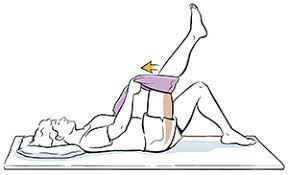
- Start with lying on the back, starting with each knee bent.
- Grasp a rope or towel around one foot.
- While holding both ends of the towel, gently lift one leg off the surface until a stretch is felt in the back of the leg.
- Hold twenty seconds.
- Return to the initial position.
- Repeat three times on each side.
- Do it two times per day.
Knee to Chest:
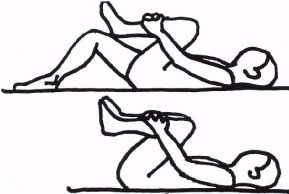
- Start with lying on the back with each knee bent.
- Grasp behind one knee and slowly pull the knee towards the chest until a comfortable stretch is felt in the lower back.
- Hold for 20 seconds then return to the initial position.
- Do it three times on both sides.
- Perform two times per day.
Piriformis Stretch:
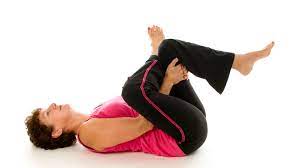
- Start with lying on the back with each knee bent.
- Pull one knee to the opposite shoulder.
- Keep the back flat, do not twist.
- Hold twenty seconds then return to the initial position.
- Repeat three times on each side.
- Do it two times per day.
Prone Quadriceps Stretch:

- Start with lying on your stomach.
- Place a rope, sheet, or belt around one of the feet and pull the heel toward the buttock until a person experiences a stretch in the front of the thigh.
- Hold twenty seconds then return to the initial position.
- Repeat three times on both sides.
- Do this exercise two times per day?
Calf stretch:
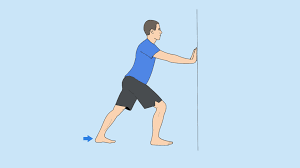
- Start with standing facing a wall.
- Keep up back leg straight with heel on floor and foot facing forward.
- Bend the front knee slowly and lean into the wall until a stretch is experienced in the calf.
- It is necessary to keep up the back heel on the floor throughout the whole stretch.
- Hold twenty seconds.
- Return to the initial position.
- Repeat three times on both sides.
- Do it two times per day.
Transverse Abdominal Contraction:
- Start with lying on the back with both knees bent, and feet flat.
- Tighten abdominal muscles by stretching the belly button towards the spine.
- Hold ten seconds and relax.
- Repeat ten times.
- Do it two times per day.
Bridging:
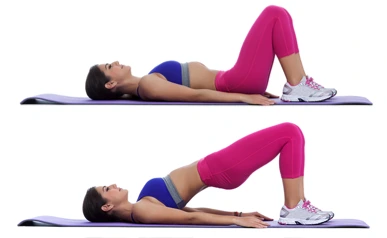
- Start with lying on the back with each knee bent.
- Squeeze the buttocks together then gently lift the buttocks off the table, keeping up the stomach tight and buttocks contracted.
- Gently lower and release to the initial position.
- Hold five seconds and repeat ten times.
- Do it two 2 times per day.
Gluteal Squeeze:
- Start with lying on the back with both knees bent and squeeze the buttocks together.
- Hold ten seconds and relax.
- Repeat ten times.
- Do it two times per day.
Transverse Abdominal March:
- Start with lying on the back with each knee bent.
- Tighten the abdominal muscles by bringing the belly button toward the spine.
- Gently march by taking one leg off the floor, then changing to the other.
- Continue pulling the belly button toward the spine while this exercise.
- Repeat ten times on both sides.
- Do it two times per day.
Wall Squats:
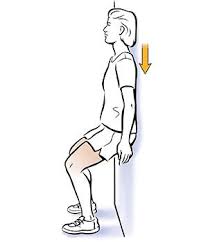
- Start with standing with the back against a wall with the feet approximately one to two feet away from the wall.
- With feet shoulder-width apart, squat approximately ½ of the way down, and be sure the knees do not go past the toes.
- Hold ten seconds and repeat ten times.
- Do it two times per day.
Strengthening exercise
Resistance band pull-apart
A great exercise to kick off the back workout, the resistance band pull-apart is simple but effective. Choose a resistance band that allows a person to complete one to two sets of 15–20 reps with good form.
- Muscles worked: The main movement of this exercise is a scapular retraction, which means people are pulling the shoulder blades together.
- This helps target upper back muscles like the rhomboids, rear deltoids, and trapezius.
- Retraction exercises also help increase shoulder health by strengthening stabilizer muscles nearby the shoulders, like those that make up the rotator cuff.
Directions:
- Start with standing with arms extended.
- Grab a resistance band taut in front of you with both hands so the band is parallel to the floor.
- Keeping up arms straight, pull the band to the chest by moving the arms out to the sides.
- Start the movement from the mid-back, squeeze the shoulder blades together, and keep up the spine neutral.
- Slowly back to the starting position and repeat.
- Perform 1 to 3 sets of 8–12 reps.
Lat pulldown
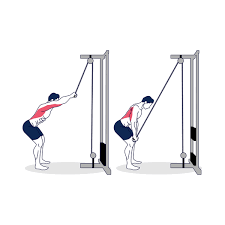
The lat pulldown is a perfect staple exercise for building a strong back. A person may complete a lat pulldown on a machine at the gym or with a resistance band.
- Muscles worked: As a person may probably guess, lat pulldowns mainly target the latissimus dorsi, a large muscle situated in the middle and lower back.
- This motion also targets the trapezius, rotator cuff, posterior deltoids, rhomboids, biceps, and forearms.
Directions:
- If people are using a machine, position the pad so it is touching the thighs.
- Stand up and grasp the bar with hands wider than shoulder-width apart, then sit back down.
- Start to pull the bar down toward the chest, bending the elbows and pointing them toward the floor.
- Engage the upper back and mid-back throughout the move.
- Keep up the torso straight, and do not allow yourself to lean back.
- Complete one to three sets of 8–12 reps.
Back extension
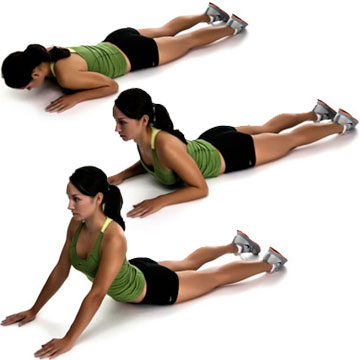
Back extensions target the entire posterior chain — in other words, the back side of the body. They are great beginner exercises.
- Muscles worked: Back extensions are great for targeting the back extensor muscles, identify as the erector spinal muscles.
- They also target the hamstrings and glutes to some extent, based on the variation people are doing.
Directions:
- Start with lying facedown on an exercise ball with the abdomen on the center of the ball.
- Press the balls of the feet into the floor behind you to stay balanced.
- People may position the feel against a wall for added support.
- Extend the arms overhead, in line with both ears.
- Bend first at the waist, bringing the body down toward the floor.
- This is the starting position.
- Gently raise the upper body and arms toward the sky until the shoulders are above hip height.
- Engage the core and glutes and keep the feet on the floor.
- Pause for a moment at the top, then gently lower down.
- Complete one to three sets of 8–12 reps.
Suspended row

Using the body weight and requiring balance and stability, the suspended row is super-effective. The great thing about it is that it is suitable for individuals of all ability levels. people will require a TRX trainer or another suspension trainer for this exercise.
- Muscles worked: Suspended rows mainly target the 3 largest muscles of the back — the latissimus dorsi, trapezius, and rhomboids.
- People will also strengthen the core, shoulders, and biceps with this move.
Directions:
- Grasp TRX handles and walk under them, forming a tabletop position with arms extended.
- The more aligned the back is to the floor, the harder this exercise will be.
- people may also perform this move with straight legs, keeping the body in one straight line.
- Keeping up the back straight and the elbows close to the sides, pull yourself up toward the ceiling.
- Extend the arms and return to the starting position.
- Complete one to three sets of 8–12 reps.
Good morning
Another exercise that targets the lower back, the good morning gets its name because the movement mirrors bowing as a way to say hello. This exercise is more advanced, so begin without any kind of weight to ensure people have the right form before loading on a barbell.
- Muscles worked: Good mornings target many muscles along the back of the body, including the glutes, hamstrings, erector spine, and upper back muscles.
Directions:
- If using weight, safely mount a barbell on the shoulders behind the head.
- Position the feet shoulder-width apart.
- Hinging at the hips, soften the knees and lower down the torso toward the floor, stopping when it’ is parallel to the floor.
- The back should remain aligned throughout this movement.
- Once people reach parallel, push through the feet and return to the initial position.
- Complete one to three sets of 8–12 reps.
Quadruped single-arm dumbbell row
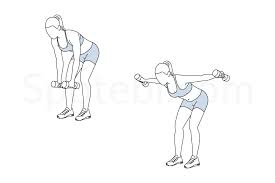
This exercise takes a person back to the basics of the row, fixing many form issues like over-rowing at the top of the movement, overstretching the arm at the bottom of the movement, and compensating with the lower back. Perform this exercise prior to completing any other rowing movements.
- Muscles worked: This move emphasizes the upper back muscles, including the latissimus dorsi, teres minor, teres major, posterior deltoids, rhomboids, and trapezius.
- It will also help build strength in the arms.
- What is more, it may help a person fix muscular imbalances by targeting both sides individually.
Directions:
- Start on hands and knees with a dumbbell positioned in both hands.
- Make sure the back is straight, the hands are directly below the shoulders, and the knees are directly below the hips.
- Row up and back with the right arm, bending the elbow and bringing the dumbbell to the armpit.
- Keep up the elbow tucked at the side throughout the entire movement.
- People will notice that if they row too far, people will lose their balance.
- Gently return the dumbbell to the initial position and repeat on the other side.
- Complete one to three sets of 8–12 reps on each side.
Wide dumbbell bent-over row
Mimicking a barbell row, a wide dumbbell row allows a person an improved range of motion and may help the person to address muscular imbalances between sides. Choose light- to moderate-weight dumbbells to begin — ten pounds should work — and work the way up from there. If people have lower back issues, use precautions with this exercise.
- Muscles worked: This move targets most of the muscles in the back, like the latissimus dorsi, rhomboids, trapezius, and erector spinae.
Directions:
- Hold a dumbbell in both hands with the palms facing the thighs, and stand with feet shoulder-width apart.
- Bend the knees gently, keeping up core engaged and neck neutral, and hinge at the hips until the torso forms a 45-degree angle with the floor.
- Permit the dumbbells to hang down in front of you.
- Initiate to row with the elbows at a 90-degree angle, pulling them up toward the ceiling.
- Squeeze the shoulder blades combined at the top.
- Return to the initial position and repeat, completing one to three sets of 8–12 reps.
Forearm plank
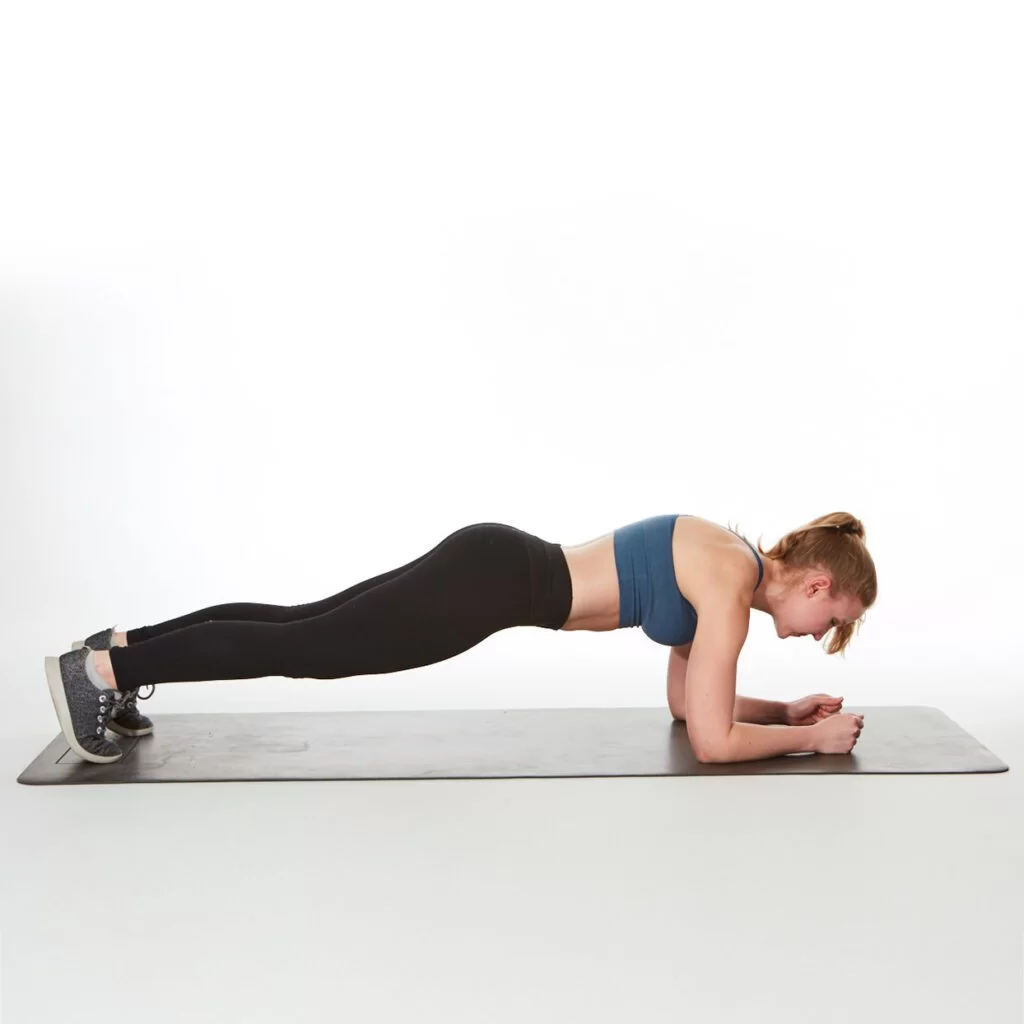
Generally thought of as a core movement, planks are really a full-body exercise. They recruit those deep back muscles — the erector spinae — to allow people to hold the position effectively.
- Muscles worked: This full-body exercise targets the core (rectus abdominis, obliques, transverse abdominis, erector spinae), upper body (trapezius, rhomboids, latissimus dorsi, chest, serratus anterior), shoulders, arms, and legs.
Directions:
- Start with getting into a plank position with the elbows and forearms on the floor and the legs extended, supporting the weight on the toes and forearms.
- The body should be in a straight line from head to toe.
- Engage the core to make sure the hips do not dip.
- Hold for thirty seconds and work the way up to one minute or even longer.
Smith machine row
As equal to a barbell row, this exercise is great for targeting the upper back. Many individuals prefer using a Smith machine because it balances the weight for people, allowing people to focus on lifting with the upper back muscles.
- Muscles worked: This motion mostly targets the latissimus dorsi but also strengthens the trapezius and posterior deltoids.
Directions:
- Stand behind the Smith machine bar with the feet shoulder-width apart.
- Hinge at the hips, gently bend the knees, and maintain a neutral spine.
- Place the hands over the bar with an overhand grip, a little wider than shoulder-width apart.
- Pull the bar up toward the chest by squeezing the shoulder blades together.
- Avoid using the arms to do most of the work.
- Gradually return the bar to the first position.
- Do one to three sets of eight to twelve repetitions.
Seated row
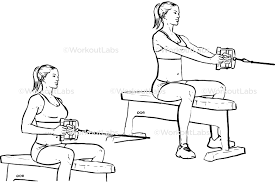
Seated rows keep up the muscles under tension at the time of the whole exercise, helping to build a strong back.
- Muscles worked: This exercise is great for targeting the latissimus dorsi and rhomboids.
- It will also target other muscles, like the trapezius and biceps.
Directions:
- Adjust the cable according to your row seat so that the handles are at chest height.
- Just sit up straight and place the feet flat on the floor or on the foot supports.
- Grasp the handles and hold them in front of you with your arms extended.
- Pull the handles toward the chest by squeezing the shoulder blades and drawing the elbows back.
- Keep up the elbows close to the body.
- Back to the initial position with gentle, controlled movement.
- Do one to three sets of 8–12 repetitions.
FAQ
Relatively infrequent, only one out of every 100,000 individuals in the U.S. will develop discitis. It is more usual in children and adolescents, but may still happen in adults. In spite of treatment advances, discitis remains potentially deadly.
Mortality connected with diskitis happens from the spread of infection, either through the nervous system or through other organs. Mortality has been reported to be 2-12 percent.
The most usual antibiotics used were vancomycin/cefepime/linezolid taken with amikacin and metronidazole. Antibiotic treatment was tailored in 2 culture-positive patients after surgical debridement.
However, discitis may cause prolonged effects involving pain and mobility issues if not treated correctly and in a timely fashion. In the worst-case scenarios, discitis may cause paralysis and a complete spinal cord injury.
There have been too many experiments done to regenerate a replacement disc, However very limited success. Some growth happens, but the quality of the tissue, from a mechanical point of view, is far inferior to the mechanical requirement of the human body.

